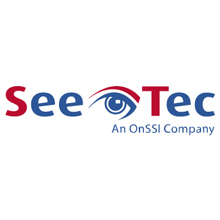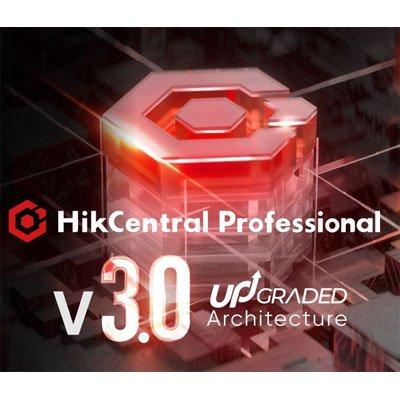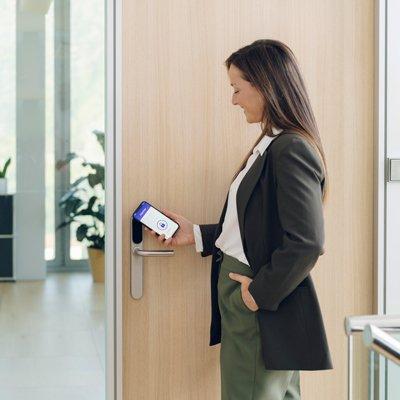If you believe recent surveys to be true, commercial damage in Germany caused by retail shrinkage accounts for about 3.8 billion Euro per year – this is one per cent of the total turnover of this industry. More than half of this is caused by shoplifting. Another 40 % of the total amount can be related in equal terms to employees and suppliers.
The retail industry’s answer to this enormous volume of damage is obvious: prevention and investigation by combining traditional article surveillance and intelligent video technology. Video-based systems do not only reduce retail shrinkage. They can also be used to better understand customers and their buying behaviour and to optimise the sales approach. SeeTec Cayuga BVI Retail provides solutions for both requirements.
Challenges faced by retail business
Highstreet retail businesses don’t have an easy time: Online trading provides maximum price transparency and therefore puts enormous pressure on the margins through a plain cost structure and 24/7 opening hours.
In addition to that, rents for attractive business locations in frequented city centres are increasing constantly. Retail shrinkage and inventory differences have yet another negative effect on the profit situation. Therefore, retailers are looking for solutions to fight shrinkage, which means at least to reduce its amount significantly. While many cases of shoplifting can be contained by traditional electronic article surveillance, theft or fraud caused by employees and suppliers can only be solved through the integration of video into business processes.
But for retailers it’s not just about avoiding the loss of goods: Supporting business processes and optimising the presentation and placement of goods in a shop can also be essential for commercial success. The key questions, which arise in this context, are for example: “How do customers behave when they want to buy my products?” or “Which route do customers take through my shop?”
Products, which are stacked in shelves far away from heavily frequented aisles, attract less interest and will therefore be bought less often than goods with best placements. Depending on time of day and day of the week the customers’ structure may vary significantly, too. Information about customers currently in the store can for example be used to optimise content on digital signage.
SeeTec BVI Retail
 |
| SeeTec BVI Retail supports processes & decisions by extracting information from video footage & prepares data in a company-specific way |
Video technology already found its way into the retail stores some time ago but shoplifters are not discouraged by this kind of security systems anymore. Video walls, which are often mounted at the entrance or at cash desks, are intended to have a deterrent effect, but by showing live images from the cameras they provide thieves with “helpful” information such as camera positions and viewing directions. Retailers have to go one step further to catch shoplifters in the act – here are some possibilities, which are provided by SeeTec BVI Retail:
Electronic article surveillance systems (EAS) based on label technology (RF/EM/RFID) can alert the store personnel in case of shoplifting but they cannot be used for evidence purposes if a shoplifter is not caught immediately. Through a connection to SeeTec BVI Retail an alarm from the EAS system can be forwarded automatically to the video system. So, for instance, alarm recordings can be started on relevant cameras near the exit and the live images will be displayed on the workstation of the store detective immediately.
If there is no EAS system in place, retail stores are an easy target for thieves to steal goods without being caught: While employees are for instance talking to customers, shoplifters can easily exit the store by passing an unattended cash point. For this particular case SeeTec BVI Retail can provide corridor surveillance by using intelligent video analytics algorithms on the camera or on a dedicated server: In case a person will cross a virtual tripwire, an alarm will be triggered, which automatically starts alarm recording for the camera mounted above.
In a similar way retail shrinkage caused by employees can be avoided. SeeTec BVI Retail provides the option to connect the video management system to ERP (Enterprise Resource Planning) or POS (Point of Sale) systems through a flexible driver concept. Based on this interface data from the POS system are connected to the corresponding video footage and can therefore be used as search parameters in the video system. Critical transactions such as cancelations or returns can be analysed in detail afterwards.
Uses of video anaytics in retail
SeeTec BVI Retail supports processes and decisions by extracting information from the video footage and preparing the data for the user in a company-specific way. This can be done by analytics components, which may be deeply integrated into the video software or can be connected via interfaces. In addition to that subsequent events have to be triggered in real-time for supporting processes.
SeeTec software provides a lot of features to protect personal rights, for instance masking to hide sensitive image sections or a finely graduated user rights concept |
Here are some examples how this can look like: Via so-called “heat maps” the user can easily analyse, which areas of the store (like aisles, shelves etc.) are how often frequented by customers. With this functionality you can get important information to draw conclusions for instance about the acceptance of a particular store layout or about the best placement options for particular goods.
By counting people and objects SeeTec BVI Retail can also be used to obtain information about rush hours during the opening period of a store. Collecting these data and combining them with data from the PoS system provides reliable information about the conversion rate.
Thus, the personnel planning of the store can be done more precisely and efficiently, too. In addition to that the video analytics function “occupancy” can be used to inform the store management if the queue at a cash point is exceeding a defined length. Moreover, the export of data and handover to third party systems is also possible.
SeeTec BVI Retail also provides the ability to use analytics algorithms for face recognition to determine the gender and age of persons in the camera view. With this function more precise conclusions can be drawn about the customers’ structure over a period of time. Selective advertising on digital signage and audio jingles can be planned in an optimum way.
The SeeTec LPR module can read-out all license plates automatically at the access road to the customer car park and sort them by region of origin. By analysing these data it is easy to determine where the customers come from. Regions with fewer customers can be pushed by selective advertising campaigns.
Safety & privacy
When using video technology in stores retailers also have to consider the privacy rights of their customers and employees. SeeTec software provides a lot of features to protect personal rights, for instance masking to hide sensitive image sections or a finely graduated user rights concept.

















